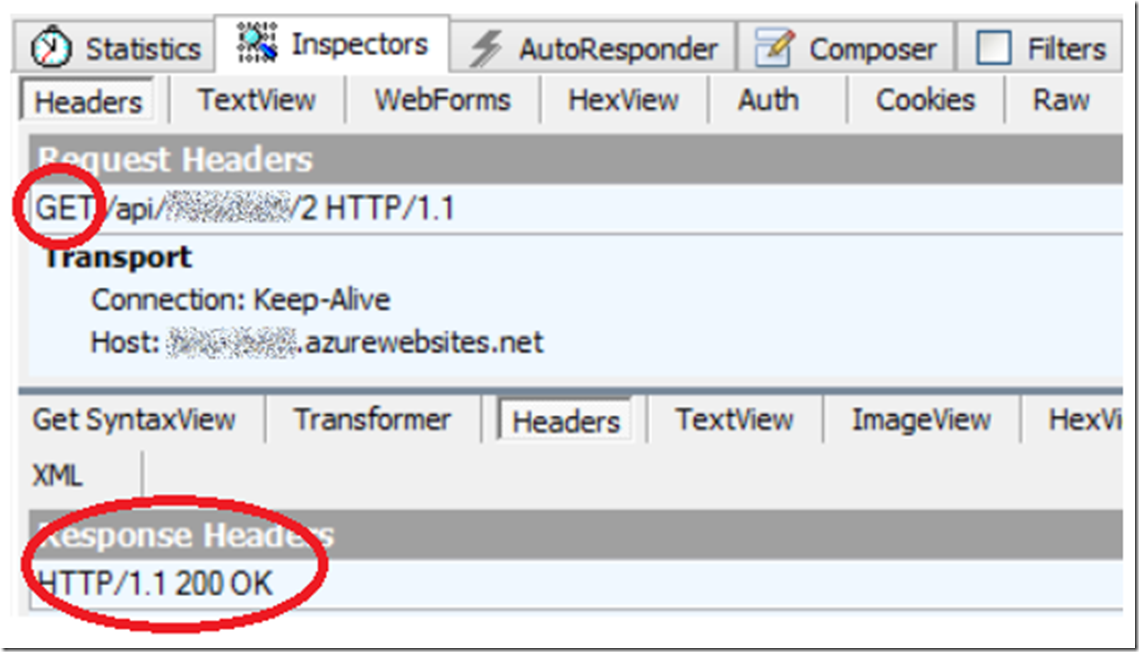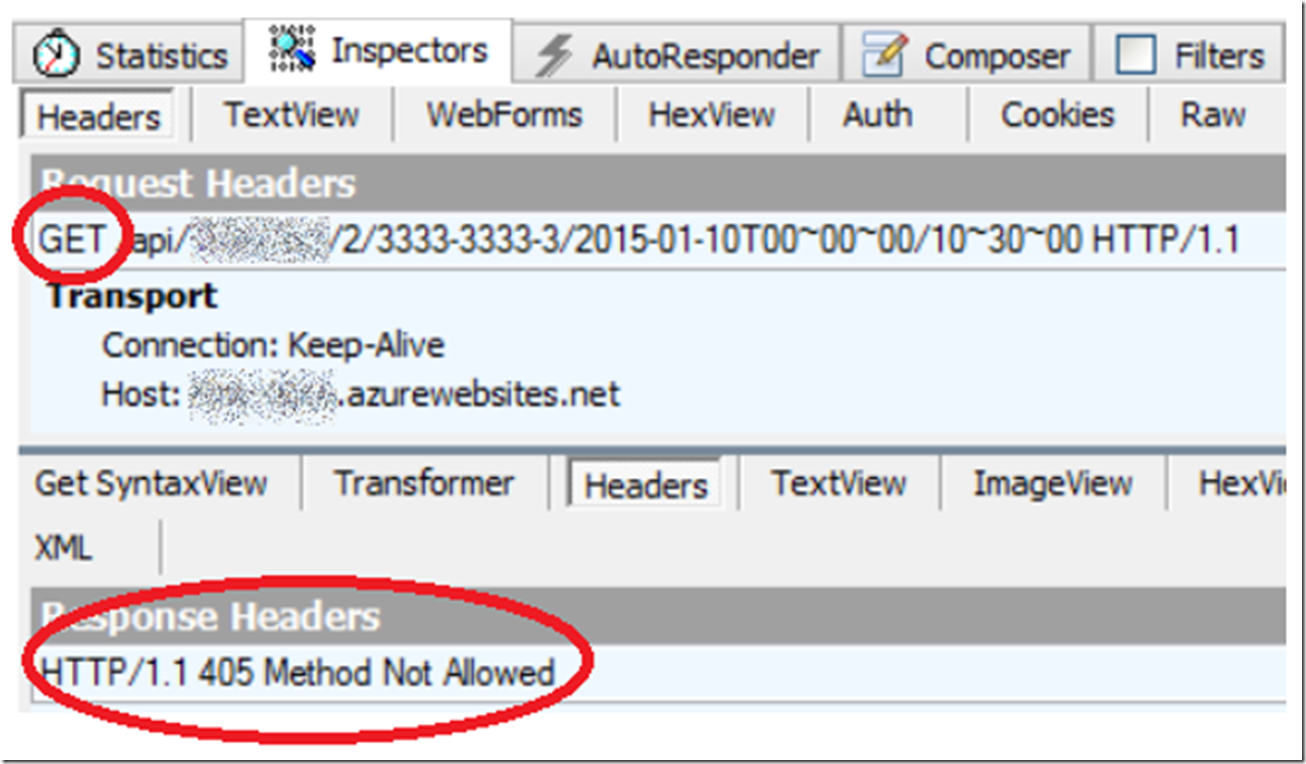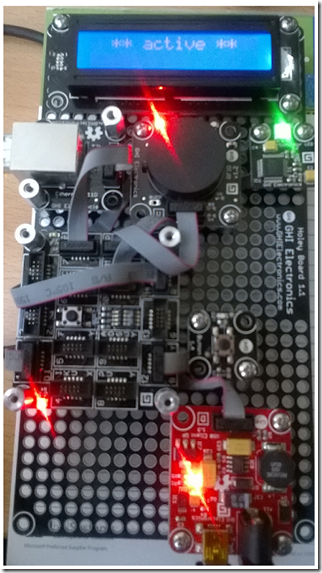I was working on an IoT project where my device was calling a WebAPI. I had two methods, one had the signature shown in Listing 1 and the other in Listing 2.
UPDATE 6-JUN-2016, check here for some exception handling tips.
Listing 1, GET employees
[Route("api/TC/{custId}")]
public IQueryable<EmployeeDTO> GetEmployees(string custId)
{
var db = new fhEntities();
return from emp in db.EMPLOYEEs
select new EmployeeDTO()
{
FIRSTNAME = emp.FIRSTNAME,
LASTNAME = emp.LASTNAME
};
}
The code for the GetEmployees method, is really a test method. It returns a list of all employees using an Entity Framework query and is accessible on my Azure Web App at, for example: “??**??.azurewebsites.net/api/TC/2”.
Listing 2, Clock In or Out
[Route("api/TC/{custId}/{rfId}/{clockedDate}/{clockedTime}")]
public IHttpActionResult ClockInOut(string custId, string rfId, string date, string time)
I created a test console application for running through all my use cases and found that when I executed the code in Listing 1, everything worked ok, however executing the code in Listing 2 did not. The call to the ClockInOut() method resulted in a 405.
Using Fiddler I looked at the request to the method shown in Listing 1 and saw the result shown in Figure 1.
Figure 1, WebAPI GET request example
And executing the request to CheckInOut() resulted in a 405 Method not allowed, as shown in Figure 2.
Figure 2, WebAPI GET request results in 405 method not allowed
How could that be? Both are GET requests.
The answer is that as per naming conventions, because I added the work ‘Get’ to the beginning of the method as shown in Listing 1, the WebAPI logic interpreted it as a GET request. However, because there was no VERB definition on my method shown in Listing 2, I get this 405 method not allowed response when I attempt to call it.
The solution is to rename my method so that it complies with the naming standards. Therefore I renamed my ClockInOut() to GetClockInOut(), as shown in Listing 3, and all worked as expected.
Listing 3, How to fix/resolve a 405 from a WebAPI call
public IHttpActionResult GetClockInOut(string custId, string rfId, string date, string time)
Additionally, if you wanted to leave the method name unchanged, you can add the [HttpGet] annotation above the definition of the method as shown in Listing 4.
Listing 4, using annotations for verb definition with WebAPI
[HttpGet]
[Route("api/TC/{custId}/{rfId}/{clockedDate}/{clockedTime}")]
public IHttpActionResult ClockInOut(string custId, string rfId, string date, string time)
I write this article because when I initially had this issue, after searching for some explanation on it was not easily findable. However, after researching it makes sense and I write this blog to help people possibly find the solution faster and get back to doing some development and project progress. Let’s code!
Figure 3 is a picture of the time clock I built using the Gadgeteer. At the moment it does use the Ethernet J11D module but will be enhancing it to use the WiFi RS21 Module with Antenna.
Figure 3, an example of a time clock using the Gadgeteer


